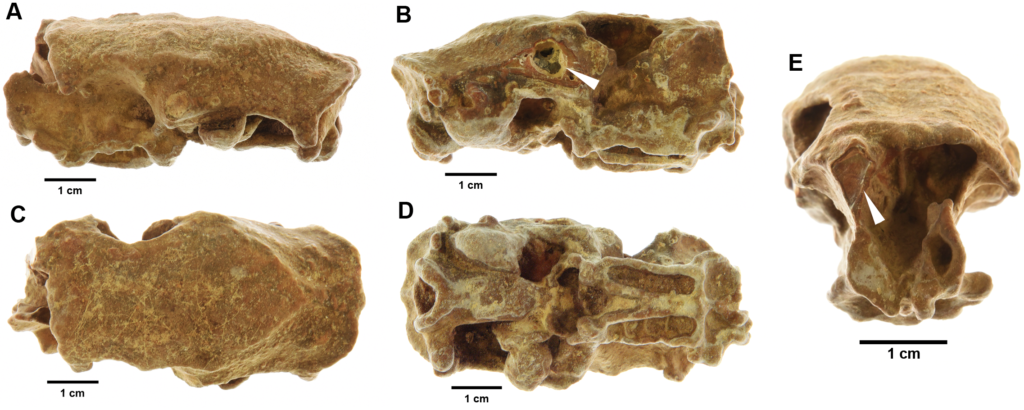@WFS,World Fossil Society,Riffin T Sajeev,Russel T Sajeev
Collagen Fingerprinting: A New Screening Technique for Radiocarbon Dating Ancient Bone
Citation: Harvey VL, Egerton VM, Chamberlain AT, Manning PL, Buckley M (2016) Collagen Fingerprinting: A New Screening Technique for Radiocarbon Dating Ancient Bone. PLoS ONE 11(3): e0150650. https://doi.org/10.1371/journal.pone.0150650
Editor: Siân E. Halcrow, University of Otago, NEW ZEALAND

Skull from hutia, Capromys sp. (sample number 24, Bedding Plane II Cave, Cayman Brac) showing an example of the extent of mineralisation that is typical in Cayman Island assemblages.
Images show left (A), right (B), dorsal (C), ventral (D) and anterior (E) sides of skull. For interest, arrows indicate sites where sampling was achieved for 14C dating and ZooMS analysis
Collagen is the dominant organic component of bone and is intimately locked within the hydroxyapatite structure of this ubiquitous biomaterial that dominates archaeological and palaeontological assemblages. Radiocarbon analysis of extracted collagen is one of the most common approaches to dating bone from late Pleistocene or Holocene deposits, but dating is relatively expensive compared to other biochemical techniques. Numerous analytical methods have previously been investigated for the purpose of screening out samples that are unlikely to yield reliable dates including histological analysis, UV-stimulated fluorescence and, most commonly, the measurement of percentage nitrogen (%N) and ratio of carbon to nitrogen (C:N). Here we propose the use of collagen fingerprinting (also known as Zooarchaeology by Mass Spectrometry, or ZooMS, when applied to species identification) as an alternative screening method for radiocarbon dating, due to its ability to provide information on collagen presence and quality, alongside species identification. The method was tested on a series of sub-fossil bone specimens from cave systems on Cayman Brac (Cayman Islands), chosen due to the observable range in diagenetic alteration, and in particular, the extent of mineralisation. Six 14C dates, of 18 initial attempts, were obtained from remains of extinct hutia, Capromys sp. (Rodentia; Capromyidae), recovered from five distinct caves on Cayman Brac, and ranging from 393 ± 25 to 1588 ± 26 radiocarbon years before present (yr BP). All of the bone samples that yielded radiocarbon dates generated excellent collagen fingerprints, and conversely those that gave poor fingerprints also failed dating. Additionally, two successfully fingerprinted bone samples were screened out from a set of 81. Both subsequently generated 14C dates, demonstrating successful utilisation of ZooMS as an alternative screening mechanism to identify bone samples that are suitable for 14C analysis.
@WFS,World Fossil Society,Riffin T Sajeev,Russel T Sajeev



 April 19th, 2018
April 19th, 2018  Riffin
Riffin  Posted in
Posted in  Tags:
Tags: 